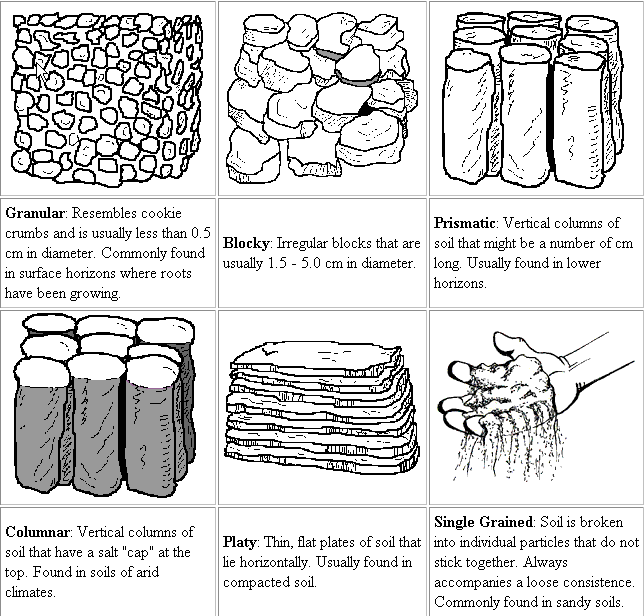Soil Structure
Soil structure is the arrangement of soil particles into groupings. These groupings are called peds or aggregates, which often form distinctive shapes typically found within certain soil horizons. For example, granular soil particles are characteristic of the surface horizon.
Soil aggregation is an important indicator of the workability of the soil. Soils that are well aggregated are said to have “good soil tilth.” The various types of soil structures are provided in Table .
Table Types of Soil Structures in Soils


SOIL AGGREGATES
Generally, only the very small particles form aggregates, which includes silicate clays, volcanic ash minerals, organic matter, and oxides. There are various mechanisms of soil aggregation.
- Soil microorganisms excrete substances that act as cementing agents and bind soil particles together.
- Fungi have filaments, called hyphae, which extend into the soil and tie soil particles together.
- Roots also excrete sugars into the soil that help bind minerals.
- Oxides also act as glue and join particles together. This aggregation process is very common to many highly weathered tropical soils and is especially prevalent in Hawaii.
- Finally, soil particles may naturally be attracted one another through electrostatic forces, much like the attraction between hair and a balloon.


0 Comments:
Post a Comment